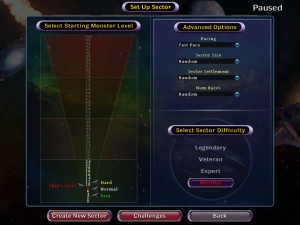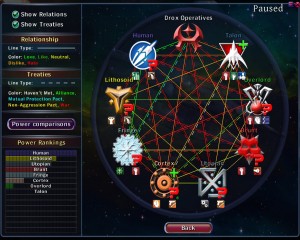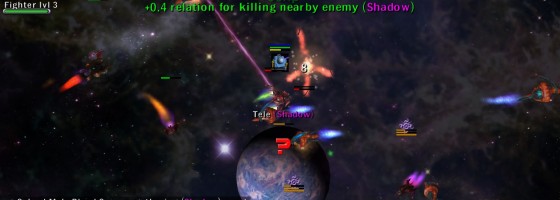Diablo may be the name most closely associated with ARPGs but the genre has become popular among Indie developers. And Soldak Entertainment has made a name for themselves with a variety of well designed ARPGs.
With work wrapping up on the expansion to their latest game: Drox Operative, I decided to chat with owner and lead designer of Soldak — Steven Peeler about APRG design.
1. Soldak Entertainment has been releasing ARPGS since 2007. What inspired you to focus on the ARPG genre?
At the end of my stint at Ritual I, amongst a few others, were pitching RPG concepts but there weren’t any publishers that seemed interested to fund a Ritual RPG. So when I left Ritual I still really wanted to work on an RPG. That’s what led to Depths of Peril. Ever since then I have enjoyed working on ARPGs, so we haven’t branched out too far.
2. One of the major selling points for Soldak’s games is having a living world: where threats and problems will appear regardless of the player’s activity. What kind of design process do you go through in determining how the world should react and what elements will be affected?
We start with a basic idea and rough plan of what we want to do and then we use a very iterative process to design our games. For the dynamic stuff specifically, we build the system up one quest at a time. For each quest we ask a lot of questions.
Can the player fail at this task? If the player fails, what other quests can this lead to? If the player solves the quest, what is the normal result? Are there any interesting, twist type of results that can be done occasionally? What other problems can occur due to this quest lingering?
In the end, we end up with a very dynamic system where a huge number of things can happen, it is different every time, and it responds to the player’s actions and inactions.
3. Loot design has been a major make or break component in ARPGs, with every developer using their own interpretation. What elements do you feel make up good loot design and how have they figured into Soldak’s works?
I like to have both clear winners and lots of choices that don’t have winners. Sometimes it is nice to find a new weapon that is better in all ways than your old weapon. It is fun to find new items like this. However, it doesn’t lead to long term, deep gameplay.

Using randomized settings for world generation is a major component to the replayability of Soldak’s games
Long term you want to present the player choices. Do you want to go full offensive with lots of weapons? Or would a balanced layout with decent weapons and lots of defensive work better?
Or would a very specialized layout that maximizes something like critical hits work the best?
4. Unlike a traditional story-based ARPG, Soldak’s design is about randomized worlds with an ever escalating power and threat curve. How do you go about balancing and fine-tuning a game where there are so few elements set in stone?
I try to balance things as much as possible on paper. After that it really is just lots and lots of testing and balancing changes. We have brought gamers into this process by doing a pre-order/beta for our last few games/expansions (we are doing this right now with Drox Operative: Invasion of the Ancients.)
I think this has worked well. Gamers get to play the game early, get a cheaper price, and get to impact the game. We on the other get much more feedback before the official release. We also keep tweaking things long after our games are released based on gamer feedback.
5. Moving on to Drox Operative, this was Soldak’s first Sci-Fi setting ARPG, where did the original concept for Drox come from?
Sometime while thinking about the next game after Din’s Curse, I thought about what a game would be like if you took a Master of Orion type of galaxy and played from the viewpoint of one ship. To me this was a really cool idea, so I kept fleshing it out. It kept sounding better and better.
6. In regards to loot, Drox featured a different design compared to Soldak’s previous games and ARPGs in general. Your ship didn’t have a “class” or skills but instead the equipment you found and used would specialize yourself. What led to the change in loot design?
This was really a change due to the setting. Everything revolving around which components you have installed on your ship makes a lot more sense than having some arbitrary class. Also, skills usually aren’t very exciting in a space ship game. What worked best in the end was essentially combining items and skills.
7. The major bullet-point from Drox’s upcoming expansion : Invasion of the Ancients is the mechanic of having persistent galaxies to explore and affect. With this being a major change in structure from your previous games, can you talk a little about how this will work?
I actually wouldn’t say it’s a change, but more of an extension of how the game works. Up until the expansion, the dynamic events or races could get out of hand or a sector could be lost, but you could always just start a new sector and you would have a fresh start.
The only thing that would carry over is your ship and all of its stats, components, and crew. From a design standpoint, this mechanism is great because we don’t have to worry too much about completely breaking the world and ruining a ship for good. We can do crazy stuff and if it is too overwhelming, the player can always start over without losing what’s actually important to them.

Drox Operative was inspired by 4X styled games, right down to its multiple factions and diplomacy model.
The persistent galaxies actually work in the same manner. A new ship or a new sector defaults to being in the last galaxy created.
However, if that galaxy gets too crazy, you can always start a new sector in a new galaxy or an older galaxy that’s a little more stable.
8. A few weeks ago I spoke with Cryptic Comet founder: Vic Davis and one of the topics we discussed was the difficulty for smaller indie developers to get on to Steam.
As another indie developer who has had some trouble getting on Steam, could you comment on some of the difficulties you had?
Yeah, it’s extremely difficult to get an indie game on Steam. They are very picky and they don’t tell you why. Both parts of this are understandable, but still frustrating. Other than having a really popular game in the first place, I really wish I knew the secret into getting on to Steam. We’ve managed to get two games and an expansion on there and I still don’t really know.
What’s also frustrating is all of the gamers that tell us we should just put the game on Steam and then we would make lots of money. That’s kind of like telling us we should go and win the lottery. If only it was that easy.
9. One interesting element about Soldak’s works is that each one of your games is a different take on the same genre and is unique enough to stand on its own. Between Kivi’s Underworld, Depths of Peril, Drox Operative and Din’s Curse, is there one that you are particularly fond of and would like to explore its design further?
I’m pretty fond of all of the games that we have created. Of course most designers would probably say the exact same thing. I could see Soldak making a sequel to any of them except for Kivi’s Underworld. For Depths of Peril, Din’s Curse, and Drox Operative, we already have lots of ideas on how to expand them and they would be a lot of fun to work on. That really applies to Kivi’s Underworld also, but Kivi just didn’t fit our core audience very well.
10. Lastly, as you continue to work on the expansion for Drox Operative, can you give us any teasers as to what’s next for Soldak?
I’m hopefully porting some of our games to other platforms next. Past that I have a bunch of vague ideas, but nothing is concrete at this point in time.
Thanks for taking the time to talk to with me and we can’t wait to see Invasion of the Ancients.



Pingback: Spacey Game Newsies and Dealsies 8/8-9/13: The OMG-X-Rebirth-Has-A-Release-Date-Finally Edition ;) | Space Game Junkie()